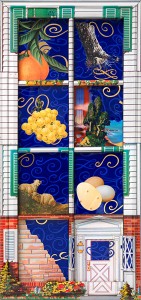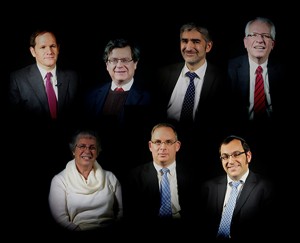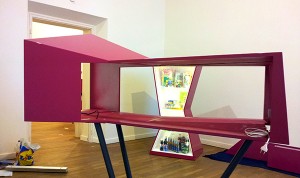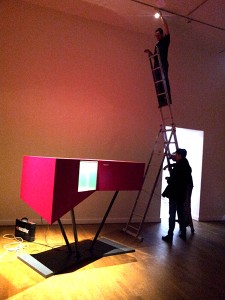
Seder Plate by Harriete Estel Berman, U.S.A., 2003 © photo: Jens Ziehe, Jewish Museum Berlin
Passover is not only a feast day evoking an historic event through a ritualized form of remembrance. It also appeals to reenact the exodus out of Egypt and envision divine mercy, freeing us from bondage and disenfranchisement. Like many Jewish holidays the original biblical Passover story has been and still is seen in relation to other historical events. The Egypt of the Exodus story turned into Ukraine and Belarus in the 17th century, when the Cossack chief Bogdan Chmielnicki allowed many hundreds of thousands of Jews to be murdered over the course of his struggle to liberate Poland. In the 20th century, Germany under the Nazi regime became the country to flee.
Through its culinarily-underscored recitation and discussion of the narrative, the seder provides a framework for each new re-interpretation. This appears primarily at the dinner: even while the symbolic dishes are determined by the Passover Haggadah, the other foods vary according to geography and the cultural conventions of the place where the celebration is taking place. There are especially numerous recipes for the “mortar,” the charoset, which resembles in color and texture the cementing agent used to build houses.
→ continue reading
Are we allowed to drive a car to synagogue services on Shabbat? If my father is Jewish and my mother is Christian, what am I? Can an uncircumcised man be Jewish?

Seven rabbis (left to right): Joshua Spinner, Irith Shillor, Daniel Katz, Julien-Chaim Soussan, Jonah Sievers, Avichai Apel, Gábor Lengyl
© Jewish Museum Berlin, photos: Thomas Valentin Harb
The new special exhibition, “The Whole Truth… everything you always wanted to know about Jews,” deals with common as well as uncommon questions about Judaism. We put some of these questions to seven rabbis and filmed their responses. All of them serve in Germany and represent a wide spectrum of religious belief: orthodox, liberal, conservative, progressive.
Inspired by research done on a number of Internet forums with names like “Ask the Rabbi,” “Askmoses,” and “Dear Rabbi,” in which rabbis from all over the world answer questions on how to handle religious law in everyday life, we organized the shooting of this film → continue reading

Installation of the showcases for the exhibition “The Whole Truth”
© Jewish Museum Berlin, photo: Michal Friedlander
The exhibition “The Whole Truth … everything you always wanted to know about Jews” opens in a few days. The curatorial team steps back to admire the showcases and compliment one another on a job well done.
Not quite. Let me guide you through my afternoon.
13:45 After returning our food trays in the Mensa, there is a rush for the freezer box containing ice cream. Avoiding the crush, I make for the candy stand. Deliberations. I confer with my colleagues. M & Ms, Toblerone and Rittersport. Wrappers are discarded before we have even left the room.

Installation of the showcases for the exhibition “The Whole Truth”
© Jewish Museum Berlin, photo: Michal Friedlander
14:00 I scroll through the 13 page document listing the questions asked by museum visitors. The questions relate to Jews, Judaism and the Jewish Museum Berlin. Many repetitions. The list needs to be tidied up for exhibition use. A few samples:
Why are there so many Jewish museums and who pays for it all?
Are Jews normal?
Do Jews have horns?
Why do Jews think they are so special?
Why don’t all Jews live in Israel?
Why didn’t Jews defend themselves against the Nazis?
…?
Time for another sugar inhalation. → continue reading



